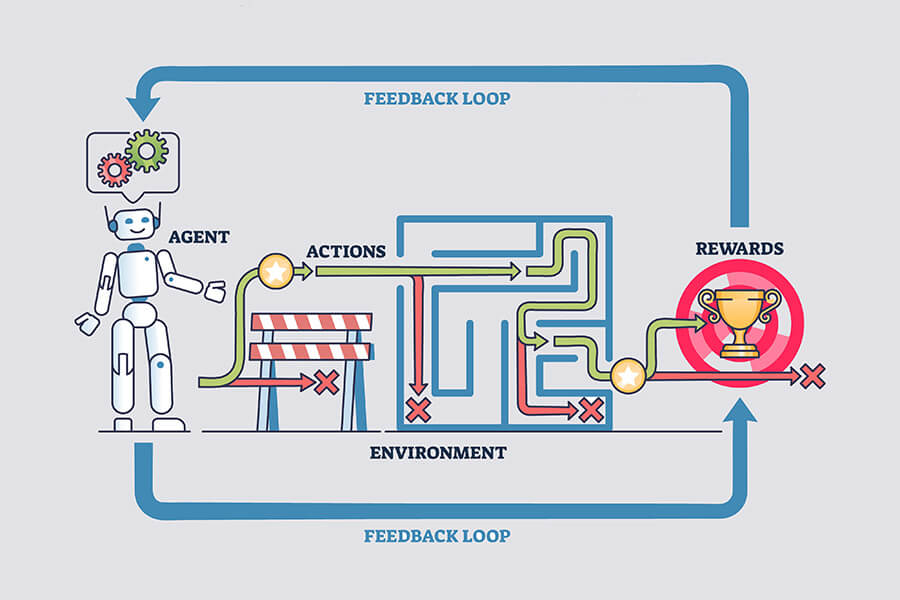Triple-Track Agile Development is a forward-thinking methodology designed for modern digital product innovation in software development. It integrates three continuous tracks—Business Strategy, Discovery, and Delivery—to ensure seamless collaboration and agility.
The Business Strategy track sets the vision and goals, guiding the team’s focus. The Discovery track refines ideas through research, validation, and testing, while the Delivery track turns those validated ideas into market-ready features. Together, these interconnected tracks provide a cohesive framework that supports adaptability, innovation, and strategic alignment in product development.
A Comprehensive Look at Triple-Track Agile Methodology
In a world driven by innovation and rapid technological change, organizations need methodologies that help them adapt quickly and effectively. Triple-Track Agile is one such approach developed to address the challenges of a volatile, uncertain, complex, and ambiguous environment. Integrating three interconnected tracks—Business Strategy, Discovery, and Delivery—Triple-Track Agile ensures companies can innovate, learn, and deliver solutions efficiently while staying aligned with their users’ needs.
What Is Triple-Track Agile?
Triple-Track Agile expands on the dual-track Agile model, adding a Business Strategy track to align strategic goals with development. Each track operates continuously, providing mutual feedback, which ensures dynamic learning and improvement throughout the product development process. This iterative and non-linear approach fosters agility and collaboration, replacing outdated, linear project management methods.
The Three Tracks in Detail
- Foundation: The Business Strategy Track This track establishes the strategic groundwork for the project. It focuses on:
- Aligning product development with overarching business objectives.
- Identifying high-level challenges and potential risks.
- Providing tools, technologies, and insights for the Discovery and Delivery tracks.
- Discovery: Exploring and Validating Ideas The Discovery track is the heart of the learning process. It’s where multidisciplinary teams, including business analysts, UX researchers, and software architects, collaborate to:
- Dive deep into user problems and pain points.Conduct experiments, user interviews, and rapid prototyping to test assumptions.Validate or discard ideas based on user feedback.
- Delivery: Building and Releasing the Product Once ideas are validated, the Delivery track transforms them into functional products. Agile teams of engineers focus on:
- Coding, testing, and deploying features with a commitment to quality and speed.Ensuring the product meets user and business requirements with minimal bugs.Building sustainable, scalable systems that handle user demands efficiently.
Why Triple-Track Agile?
1. Adaptability in a Changing World: Triple-Track Agile thrives in uncertain environments, offering a flexible framework that allows teams to pivot based on new insights. For example, during the COVID-19 pandemic, many businesses found traditional waterfall methodologies too rigid to respond to evolving challenges. Triple-Track Agile’s iterative nature is far better suited for such quick-changing scenarios.
2. Collaboration Across Disciplines: Each track relies on multidisciplinary teams that bring diverse perspectives to problem-solving. This collaboration enhances creativity, ensures more comprehensive solutions, and aligns everyone around shared objectives.
3. Reduced Risk and Waste: By validating ideas early in the process, Discovery prevents teams from spending resources on features that don’t meet user needs or business goals. This approach minimizes rework and accelerates time-to-market.
4. Data-Driven Decision Making: Metrics and user feedback are integral to Triple-Track Agile. They validate ideas and provide actionable insights that guide future iterations.
How Triple-Track Agile Redefines Processes
Unlike traditional project management, where work progresses linearly from one stage to the next, Triple-Track Agile promotes continuous learning and feedback loops. Each track informs and supports the others, creating a dynamic and iterative workflow. For instance:
- Strategic goals defined in the Business Strategy track shape the focus of Discovery.
- Insights gained in Discovery guide the Delivery process.
- Real-world feedback from Delivery feeds back into Discovery and Strategy, enabling continuous refinement.
Challenges and Implementation Tips
While Triple-Track Agile offers significant advantages, adopting this methodology requires careful planning and execution:
- Complexity: Coordinating three tracks simultaneously can be challenging. Clear communication and robust tools are essential.
- Team Buy-In: Shifting from traditional models to Triple-Track Agile requires cultural change. Training and strong leadership can help teams embrace this new approach.
- Metrics Alignment: Success depends on defining and tracking meaningful metrics that connect strategy, discovery, and delivery outcomes.
Organizations implementing Triple-Track Agile should prioritize fostering a product culture where the focus shifts from simply delivering outputs to achieving measurable outcomes that matter to users and the business.
Transitioning to Triple-Track Agile
Adopting a Triple-Track Agile approach can be transformative but requires thoughtful planning and a mindset shift. Here are some key considerations for teams making the transition:
Maintain a Unified Team
One critical principle of Triple-Track Agile is that the same team works across all three tracks: Strategy, Discovery, and Delivery. Dividing these responsibilities among separate teams can lead to fragmentation, where knowledge, insights, and ownership are lost as work passes from one group to another. Keeping a unified, cross-functional team ensures seamless collaboration, shared understanding, and stronger accountability for outcomes.
Run Tracks in Parallel
Unlike traditional waterfall methods, where stages follow a strict linear progression, Triple-Track Agile emphasizes parallel workflows. This means work in each track happens simultaneously, creating a dynamic and iterative process. For example:
- Discovery and Strategy inform ongoing Delivery work.
- Insights from Delivery influence refinements in Discovery and adjustments to Strategy.
This parallel structure ensures agility, enabling teams to adapt quickly as new insights emerge.
Integrate Exploration into Ongoing Activities
Teams can embed exploratory work into their regular processes to keep the tracks aligned and informed. For instance:
- During regular user interviews, teams might include exploratory questions to identify unmet user needs or pain points. This integrates Discovery with broader strategic and delivery goals.
- Feedback gathered during these sessions can refine product hypotheses, align long-term strategy, and guide actionable next steps.
Schedule Exploration Sprints
Teams can schedule periodic exploration sprints to support the Strategy and Discovery tracks further. For example:
- Dedicate a sprint to exploratory research, such as user observations, interviews, or competitive analysis.
- Use these insights to inform the product roadmap, prioritize future features, or adjust strategic objectives.
Exploration sprints provide a structured opportunity to pause and evaluate whether the team’s work aligns with broader business goals and user needs.
Foster Cross-Track Collaboration
Collaboration is at the heart of Triple-Track Agile. Teams should foster continuous communication across tracks, using tools like shared dashboards, OKRs, and regular sync meetings. This ensures that insights from one track can immediately inform the others, creating a cohesive and iterative feedback loop.
Prioritize Learning and Adaptation
A successful transition to Triple-Track Agile hinges on embracing a learning mindset. Teams must:
- Continuously validate their assumptions through research and testing.
- Be willing to adapt their priorities based on real-world feedback.
- Treat mistakes as learning opportunities rather than failures.
This cultural shift is crucial for maximizing the effectiveness of the Triple-Track Agile framework.
Benefits of the Transition
Moving to Triple-Track Agile offers several advantages:
- Enhanced Agility: Running tracks in parallel allows teams to pivot quickly when new insights emerge.
- Stronger Alignment: A unified team ensures strategic goals, user needs, and delivery outcomes are aligned.
- Reduced Waste: Early validation in the Discovery track prevents unnecessary work in Delivery.
- Data-Driven Decisions: Regular exploration provides a steady stream of user insights to inform long-term strategy.
Challenges and How to Overcome Them
While the Triple-Track Agile model is powerful, it comes with challenges:
- Coordination Complexity: Managing three parallel tracks can feel overwhelming. Solution: Use collaborative tools and assign a dedicated facilitator or Agile coach to keep workflows aligned.
- Team Resistance: Shifting from linear workflows to an iterative model can face resistance. Solution: Provide training, foster open dialogue, and celebrate small wins to build momentum.
- Balancing Short-Term and Long-Term Goals: Teams may struggle to balance immediate delivery needs with exploratory work. Solution: Schedule regular check-ins to evaluate priorities and ensure both are addressed.
Conclusion
Triple-Track Agile is more than just a development methodology—it’s a mindset for thriving in a fast-paced, uncertain world. Triple-Track Agile enables companies to innovate quickly, reduce risks, and deliver products that truly resonate with users by seamlessly integrating strategy, discovery, and delivery. As businesses face ever-evolving challenges, approaches like Triple-Track Agile will continue to play a crucial role in shaping the future of agile product development.







